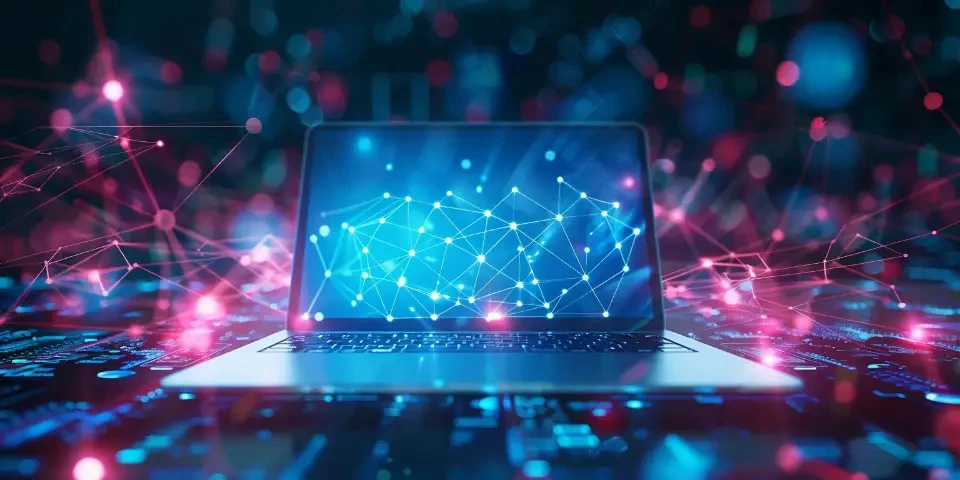Enhanced Cybersecurity with AI Safeguarding Data in the Digital Age
Data breaches and cyber threats have become a significant concern in today's digital era. As technology advances, so do the strategies employed by hackers and cybercriminals. Traditional cybersecurity methods are no longer sufficient to protect sensitive data. In this context, Artificial Intelligence (AI) emerges as a powerful tool to enhance cybersecurity and safeguard data in the digital age. By leveraging its capabilities, AI can revolutionize the way we combat cyber threats. In this article, we will explore several aspects of AI-enhanced cybersecurity and its potential in safeguarding our valuable information.
1. Advanced Threat Detection
AI plays a crucial role in detecting and mitigating advanced cyber threats that traditional security measures often miss. Through machine learning algorithms, AI can analyze vast amounts of data to identify patterns and anomalies, allowing for early detection of potential breaches. This proactive approach helps organizations stay one step ahead of sophisticated cyber attacks.

Furthermore, AI-powered threat detection systems can continuously learn and adapt to evolving threats, effectively minimizing false positives and false negatives. This dynamic learning capability enables organizations to maintain robust cybersecurity defenses.
2. Intelligent Network Monitoring
AI-powered network monitoring tools provide real-time visibility into network traffic, enabling organizations to identify suspicious activities promptly. These tools use machine learning algorithms to analyze network behavior patterns, detect anomalies, and alert security teams about potential threats.
By automating network monitoring processes, AI reduces the need for manual intervention and accelerates threat response times. It also allows for the identification of previously unseen attack vectors, helping organizations secure their networks more effectively.
3. Automated Incident Response
Incident response is a critical aspect of cybersecurity. However, conventional methods often rely on human intervention, which can lead to delays and human errors. With AI-driven automation, incident response can be drastically improved.
AI-powered systems can automatically detect and respond to security incidents, reducing response times and minimizing the impact of cyber attacks. These systems can also provide valuable insights to security teams, aiding in the investigation and remediation of security breaches.
4. User Behavior Analytics
Understanding user behavior is essential for identifying potential insider threats or compromised accounts. AI algorithms can analyze user behavior patterns to detect any deviations that might indicate a security risk.
By continuously monitoring user activities, AI-powered user behavior analytics systems can identify anomalies and alert security teams. This enables organizations to mitigate the risks associated with insider threats before they escalate.
5. Malware Detection and Prevention
Malware poses a significant threat to data security. Traditional antivirus software relies on signature-based detection, which may fail to catch zero-day malware. AI-based malware detection systems, on the other hand, leverage machine learning to identify and mitigate both known and unknown malware.
AI algorithms can analyze file attributes, behavior patterns, and network communications to detect malicious activities. This approach enhances the accuracy and effectiveness of malware detection, providing organizations with stronger defenses against evolving threats.
6. Vulnerability Management
Identifying and patching vulnerabilities is crucial in ensuring robust cybersecurity. AI can streamline the vulnerability management process by automating vulnerability scanning and prioritizing the most critical vulnerabilities.
AI-powered vulnerability management tools can analyze a vast array of data sources, such as patch notes, security bulletins, and social media, to identify emerging threats and prioritize remediation actions. By doing so, organizations can enhance their overall security posture and reduce the window of opportunity for attackers.
7. Trustworthy Authentication
AI can enhance authentication systems by making them more secure and user-friendly. Facial recognition, voice recognition, and behavioral biometrics are some AI-powered authentication methods that offer stronger security than traditional password-based systems.
By leveraging AI algorithms to detect and analyze unique patterns in user traits or behaviors, organizations can implement multi-factor authentication systems that are both secure and convenient for users.
8. Training and Awareness
AI can also be utilized to train employees and raise cybersecurity awareness within organizations. AI-powered training platforms can simulate real-life cyber attack scenarios and provide personalized feedback to employees, helping them develop the necessary skills to identify and respond to potential threats.
Additionally, AI-driven security awareness programs can analyze employees' knowledge gaps and deliver targeted training materials to address specific areas of weakness. This approach ensures that the workforce remains knowledgeable and vigilant against cyber threats.
Frequently Asked Questions:
Q: Can AI completely replace human involvement in cybersecurity?
A: While AI brings significant advancements to cybersecurity, human involvement is still crucial. Human experts provide the necessary context, strategic thinking, and decision-making abilities that complement AI's capabilities.
Q: Is AI vulnerable to attacks from hackers?
A: AI systems can be prone to adversarial attacks, where manipulated input data causes the AI algorithm to make incorrect decisions. However, researchers are actively working on developing AI models that are resistant to such attacks.
Q: How does AI help in threat hunting?
A: AI automates the process of hunting for potential threats by analyzing vast amounts of data. It can identify patterns indicative of malicious activities, enabling organizations to proactively detect and mitigate cyber threats.
References:
1. Smith, D. M., & Brooks, D. J. (2017). AI-powered cyber attacks: prevention, detection, and mitigation. Journal of Cyber Policy, 2(3), 349-365.
2. Varshney, A., Srivastava, V., & Mittal, G. (2020). Evaluating the Role of Artificial Intelligence in Cybersecurity. International Journal of Machine Learning and Computing, 10(1), 15-21.
Explore your companion in WeMate